
We’re wrapping up our K-Powered theme month today, and hasn’t it been a blast?
Just a few years ago I’d never have considered myself as a ‘Honda guy’, just a car guy who happened to own a Honda. But it’s time to face the facts: I’m now officially branded with a big red H, hence why this story landed squarely on my desk.
As we’ve seen from our features this month, the Honda K-series is more than just another engine. It’s a petrol-powered Swiss army knife which provides solutions not only to the FF Honda family, but a range of FR and MR chassis from varied manufacturers.

However, before it became the solve-all for engine-swappers, the K-series was already Honda’s answer to powering almost half their vehicle range. From 2001, Honda stuffed variants of the four-cylinder K into everything from their Odyssey people mover and the CR-V SUV, to the Accords, Integras and Civics that enthusiasts are familiar with.

This proliferation of the engine platform throughout so many different models allowed Honda to amortise the high development cost. Instead of spreading themselves thing across several compromised platforms, they put their focus, resources and money towards absolutely nailing the K-series.

Modular changes to characteristics such as compression ratio, rotating assembly and VTEC system allowed standard engines to be optimised for fuel economy, power and everything in between. The unexpected benefit for the tuners of the world is an almost Lego-like ability to swap and change different components to create a package that suits your particular requirements. Certain standard parts can command a premium due to their performance credentials, but parts are mostly cheap and plentiful.
The final spec list of a K-engine, especially the high performance K20A, reads well even 21 years after its launch (as a side note, does that make anyone else feel ancient?). Some of the highlights:
– Fully aluminium construction
– Coil-on-plug ignition
– Variable cam timing
– Chain-timed hollow camshafts
– Forged crankshaft
– Cast iron sleeves
– Roller rockers in the cylinder head
– Over 100hp/L

In many ways, the K20 is the culmination of Honda’s consistent commitment to the DOHC four-cylinder engine format. Whereas other manufacturers have wavered even amongst a single model lineage (the M3 is a great example: I4, I6, V8, I6 turbo) the Japanese ethos of continuous improvement is obvious. You can look back at the lineage and clearly see where an innovation was added, then perfected in the following generations.
D-Series (1984-)
– Dual overhead camshafts
– Full aluminium construction
– Computer-controlled fuel injection
– Hollow camshafts
– 81hp/L (D16A8)
B-Series (1989-)
– VTEC
– Forged crankshaft
– 108hp/L (B18C)
F-Series (1999-)
– Roller rockers
– Direct ignition
– Ladder frame main bearing stiffener
– Chain-driven oil pump
– Chain-driven cams
– 125hp/L (F20C)
Then the K-series came along with all the above, plus some. This isn’t mentioning the improvements to details like oiling, balancing, and low friction materials which Honda made along the way.
Honing In On Greatness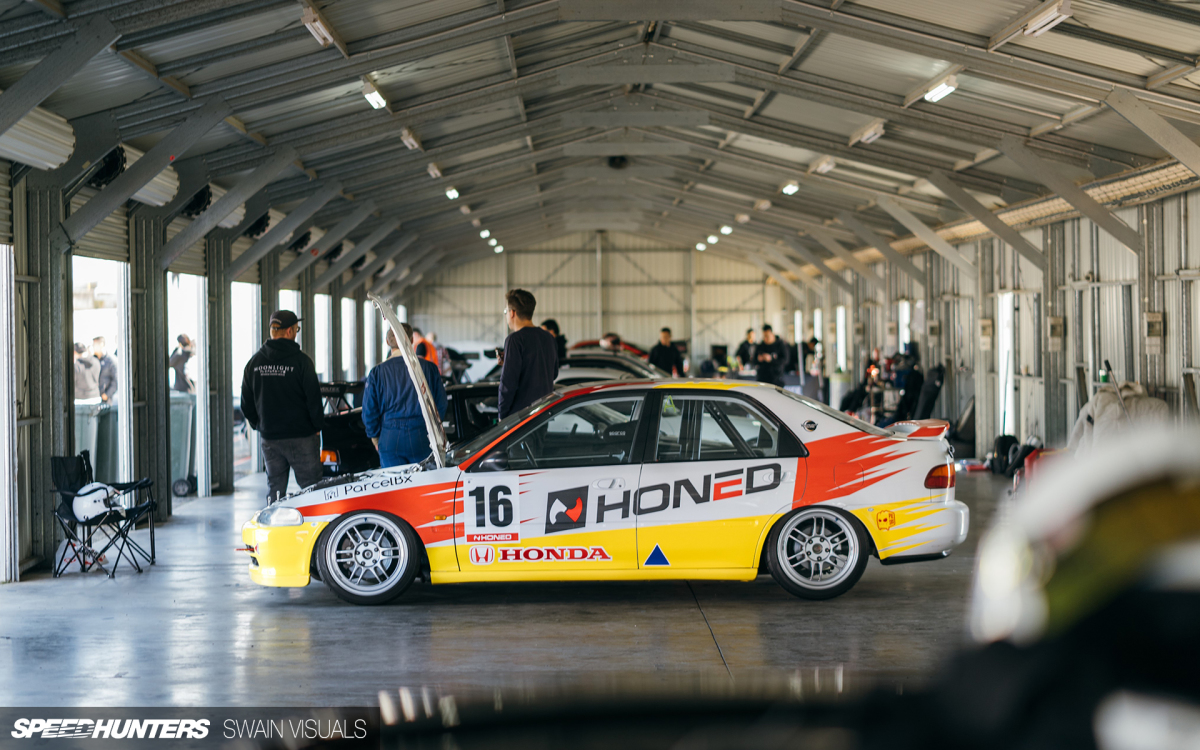
That’s enough of the history lesson – now it’s time to talk to someone who has actually walked to the walk. My first call was to Grant and Tom from Honed, founders of an Australia-based business who have carved out a niche developing high quality performance parts for ‘golden era’ Hondas. It’s a testament to the enduring interest in these cars that new companies can still find success by developing parts for cars that are on average between 20 to 30 years old.
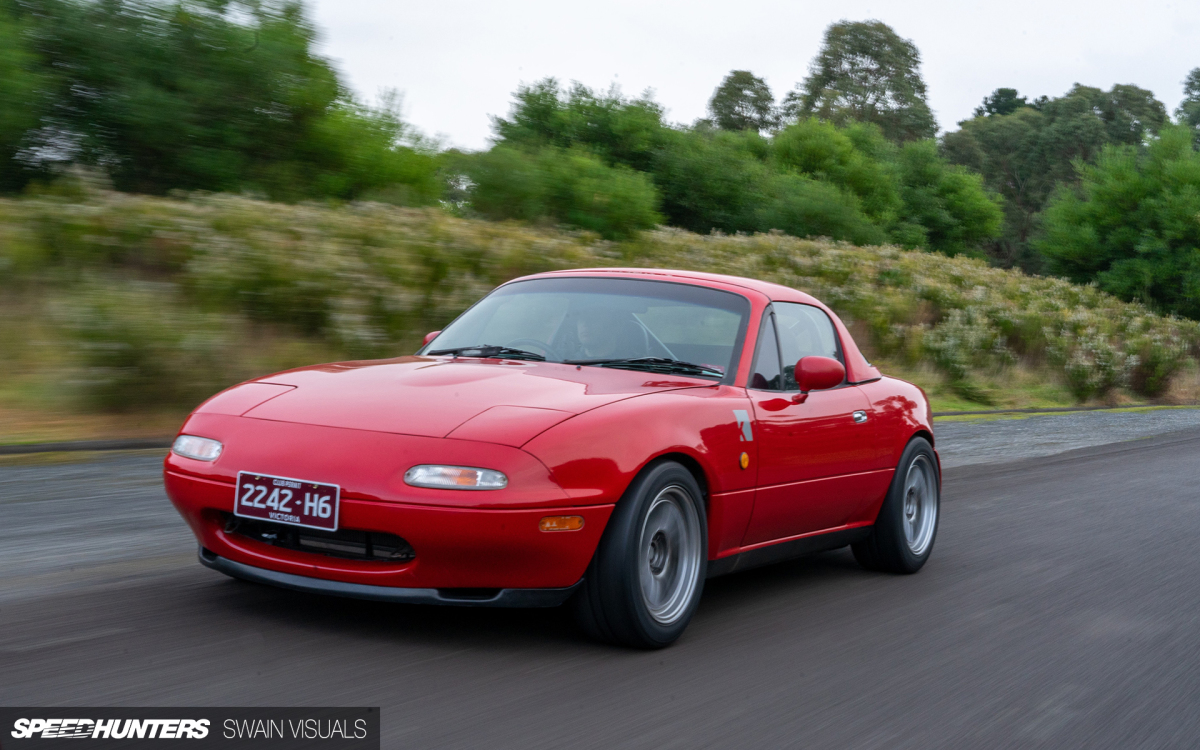
Back to the K-series engine. The Honed duo’s latest project is a step away from the front-engined Hondas upon which they built their company. They have purchased this – a first-gen MX-5 (Miata to our American friends) and completed an extremely thorough engine swap to a standard K20A2.
Being the thorough engineering folk they are, I knew every question I had about ‘why K-series?’ they would have already asked – and answered – themselves, so they would be the perfect people to ask about the draw of the K20. In fact they’ve already published a detailed breakdown of their project, so be sure to read it for the specific details.
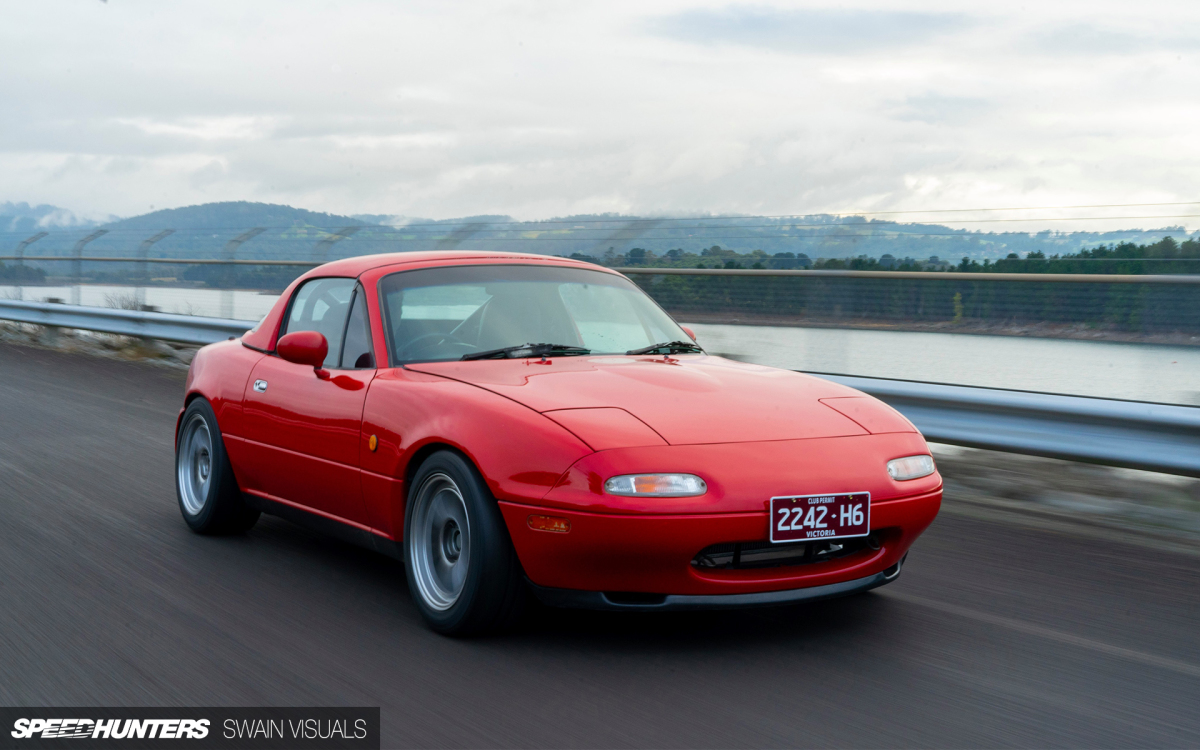
Speedhunters: You’ve chosen to fit a K20 in the Honed NA MX-5, what drove that decision?
Honed: “In our opinion it’s the perfect engine for the chassis. We believe 200kW [268hp] to be the upper limit of what the chassis can comfortably handle; beyond that number you’re better off starting with a better base car than the MX-5. The standard Mazda gearbox mated to a K20 won’t break and the powerband is a great fit for the stock gear ratios. We were looking for an optimal balance rather than outright power, and the K20 delivered that.”

Speedhunters: What characteristics make the K20 so appealing for racing?
Honed: “The K20 represents a sweet spot in the overall timeline of engine development where you get the benefit of efficient, reliable internal combustion technology without the downsides of an even more modern engine which would encumbered with emissions equipment and littered with plastics (instead of alloy components) for cost savings. Almost all modern performance engines are direct-injected and turbocharged which gives great power density but adds a huge amount of complexity and isn’t appropriate for a simple track car.
“Just a few examples of that are the chain-driven cams, separated oil pump design and the refinement of the VTEC system. Some of the engineering decisions are so performance focused, it’s really surprising in such a common engine. You’d think you were looking at something out of a high-end European sports car but with a more reliable implementation.”

Speedhunters: How does the K-series differ to Honda’s other iconic engines (e.g. B-series) to drive and work on?
Honed: “It’s very similar, you can see the family lineage clearly. In particular, Honda seemed to learn from the technical tour de force that was the S2000’s F20C. It’s so impressive that they then put that technology into what was largely a high-volume commuter engine. A key technical difference compared to earlier Honda engines is the addition of variable cam timing which gives a very broad torque curve.”

Speedhunters: Are there any limitations of the platform that you’ve come across?
Honed: “In stock form, not really. In swaps, the chain-driven oil pump can create subframe clearance issues in FR swaps like the MX-5, so we have had to fabricate a tubular subframe.”
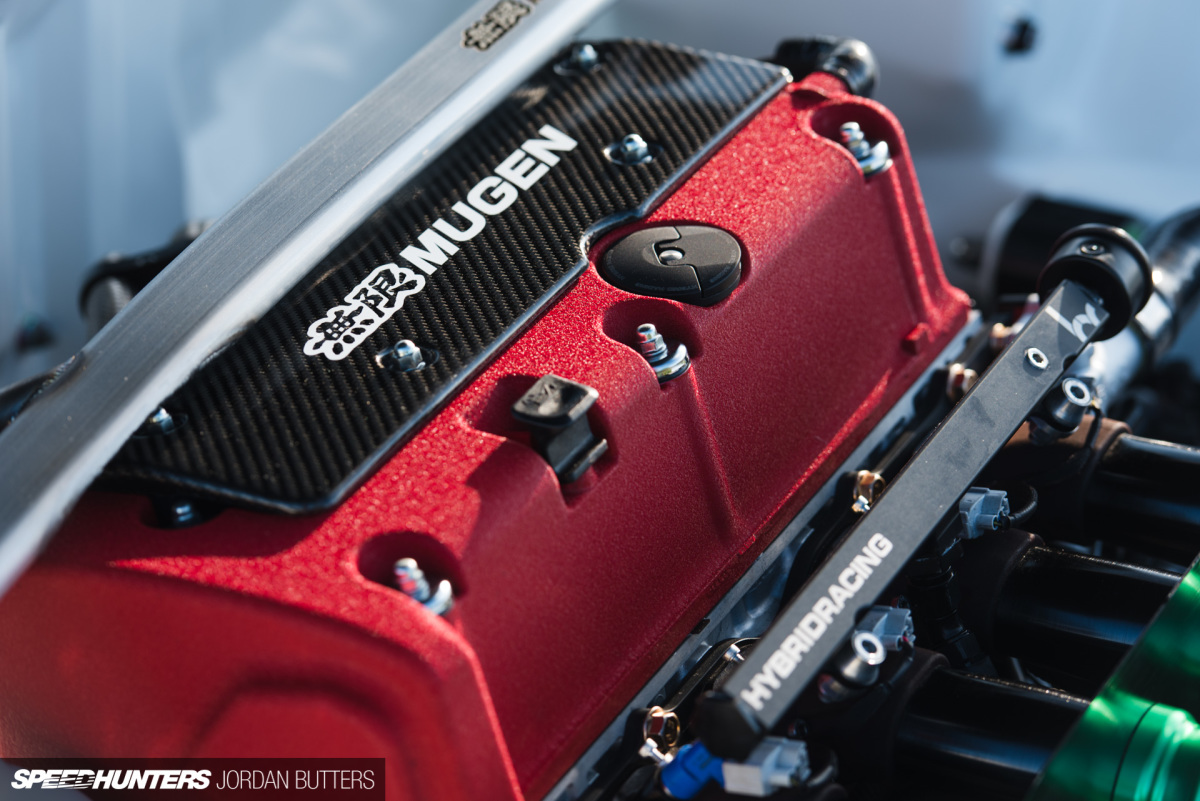
Speedhunters: Did you consider building a ‘Frankenstein’ engine, for example using a K24 bottom end for more capacity?
Honed: “Yes, but ultimately we decided a standard K20 was a better option. It has tons of charm and loves to rev, making up for a lack of capacity. It’s also go thicker walls in the cylinders, stronger rods etc. and that robustness appeals to us for our goals.”
The Tuner’s OpinionStock performance is great, but an engine only truly becomes legendary when it proves its mettle in the aftermarket – being asked to produce power levels two, three or even four times the standard output. Japan has had its fair share of legendary tuner engines – Toyota’s 2JZ, Nissan’s RB26 and Mazda’s 13B – but for years GM’s LS-series has flown the American flag at the top of the list. Scoring top marks for versatility, simplicity, robustness and availability separates it from the rest of the pack.

Can the K-series challenge that dominance? Amir Bentatou thinks so.
When Speedhunters featured Amir’s time attack NSX back in 2016, the factory-fitted C30A provided the power, but in 2018 the 90-degree V6 made way for a K-series block. Amir has piloted his own Porsche 911 and BMW M3 to time attack glory, and has his hands in any number of customer projects through his work at RS Future. When it comes to extracting more from the K-series, he was my man.
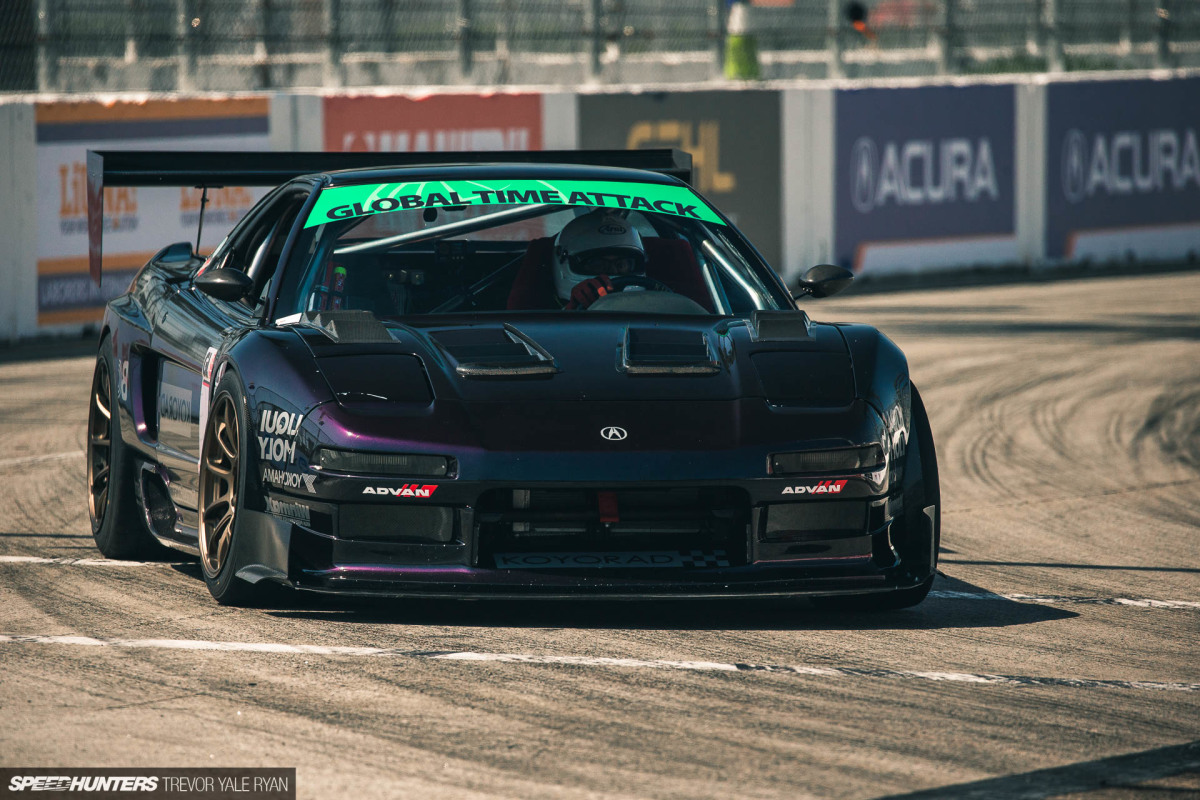
Speedhunters: You’ve started with what many would argue is Honda’s finest sports car – the NSX. Why did you go K-series instead of developing the V6?
Amir: “The K-swap was never a forgone conclusion, but after a small pros versus cons study of various options considering cost, reliability, weight etc. the K came out on top. We considered developing the C-series and looked at the J-series as well, which was a popular conversion for NSXs for a while but doesn’t have a whole lot of aftermarket support. Ultimately, on a few key criteria – weight, aftermarket support and serviceability – the K was a clear winner. We seriously saved about 400lbs [181kgs] with the swap, which is huge for an already lightweight time attack car.”
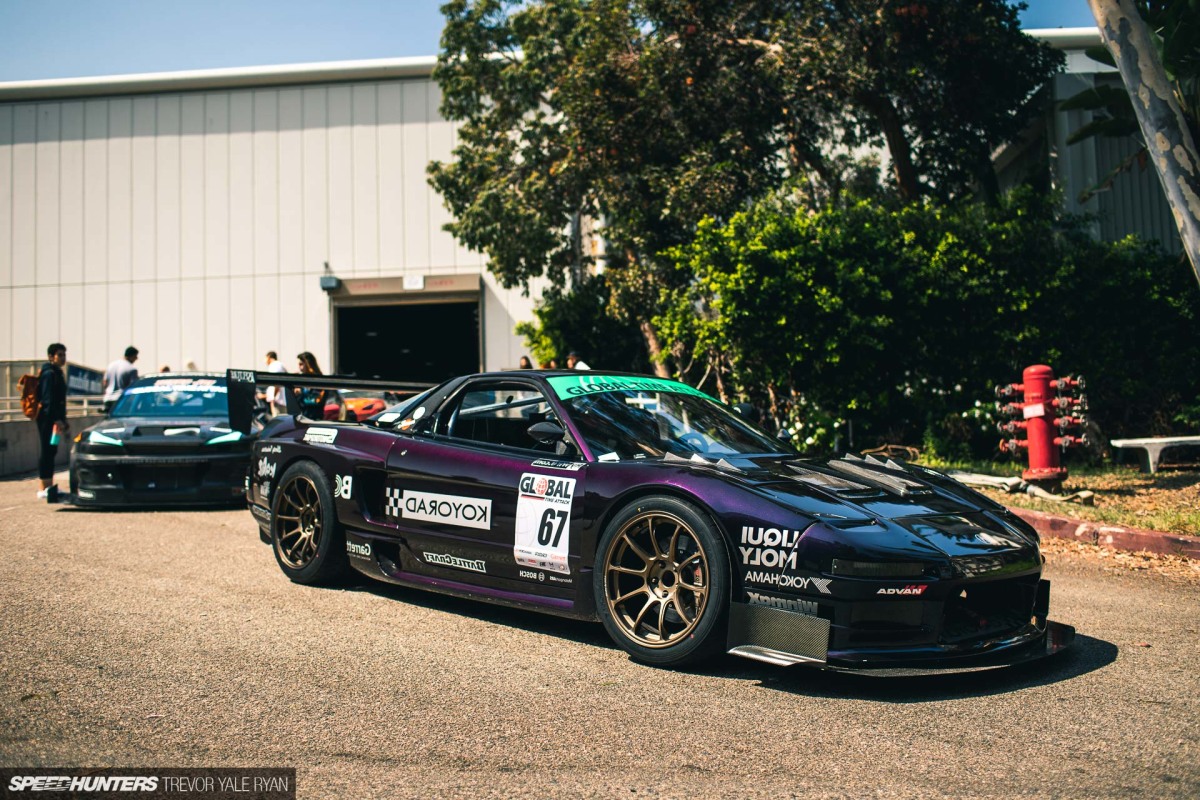
Speedhunters: Could you tell us about your specific engine build?
Amir: “It’s nothing too exotic. Sportcar Motion helped a lot, they build plenty of high power drag engines so this was relatively straightforward. It’s a K24 block mated to a K20 head, JE pistons, BC rods, 10.5:1 compression and BC Stage 2 turbo cams. Otherwise, it has Golden Eagle sleeves and we run VTEC killer pins simply for reliable oil pressure – we are constantly ‘in VTEC’ on track anyway. The Garrett G37/70 turbocharger is making 500whp currently but will do a reliable 650 when the car is ready.”

Speedhunters: Honda engines are famous for naturally aspirated performance, but the K-series is often found boosted. What makes it a good candidate for forced induction?
Amir: “It comes down to two main factors, the first being the design of the bottom end – the forged crank is encased in a once-piece girdle from factory which gives it incredible stiffness. The second is the cylinder head, which flows like crazy and can make a reliable 750 to 850hp.”
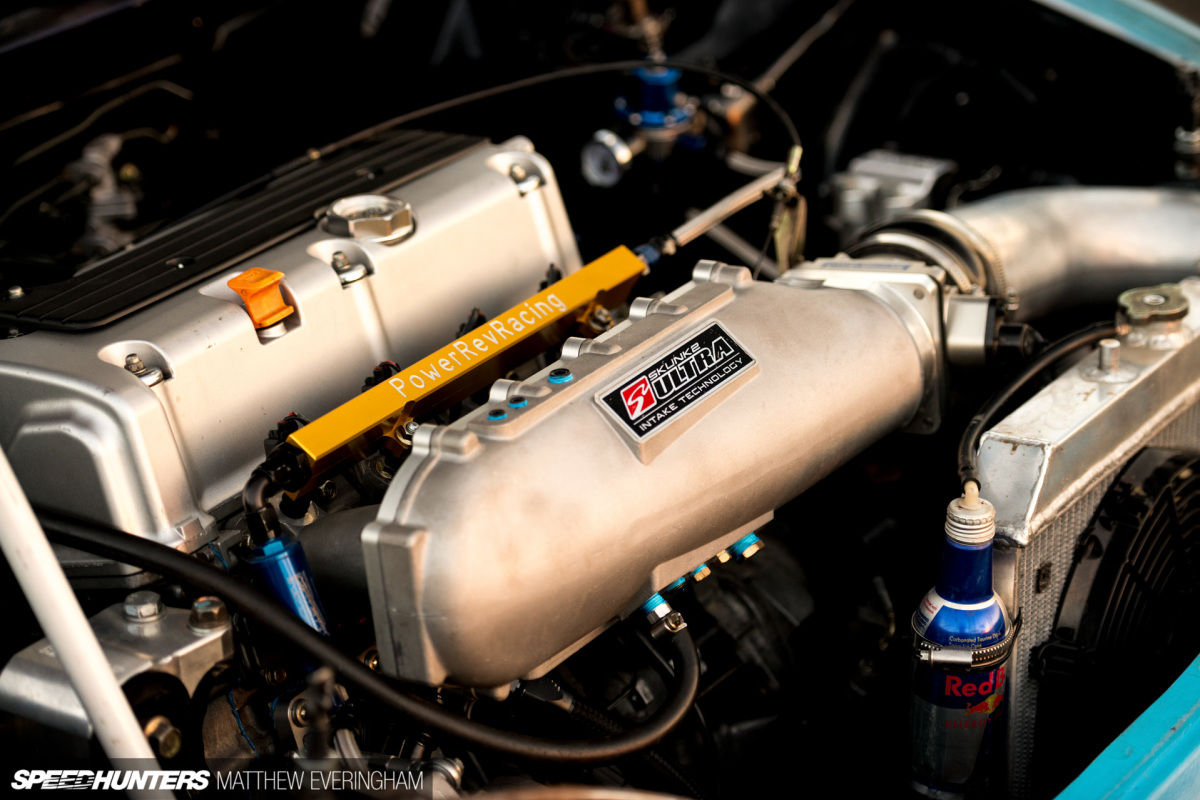
Speedhunters: What is the aftermarket support like for highly modified K-Series engines?
Amir: “One of the best things is the size of the community – it’s absolutely massive. That means a bigger market, which means bigger sales potential for products and thus greater investment in research and development from everyone. The end result is more choice at a lower cost than most other engine platforms. There’s basic recipes to get you all the way up to 1,000hp for only US$7,000 to $8,000, using part combinations which are well known. Even for aftermarket gearboxes (i.e. sequential transmissions) you have five or six options. You can take the engine in whatever direction you want – turbocharged, supercharged or NA. There will be a handful of engine builders who have done it all already, taking the ‘guesswork’ out of the build.”
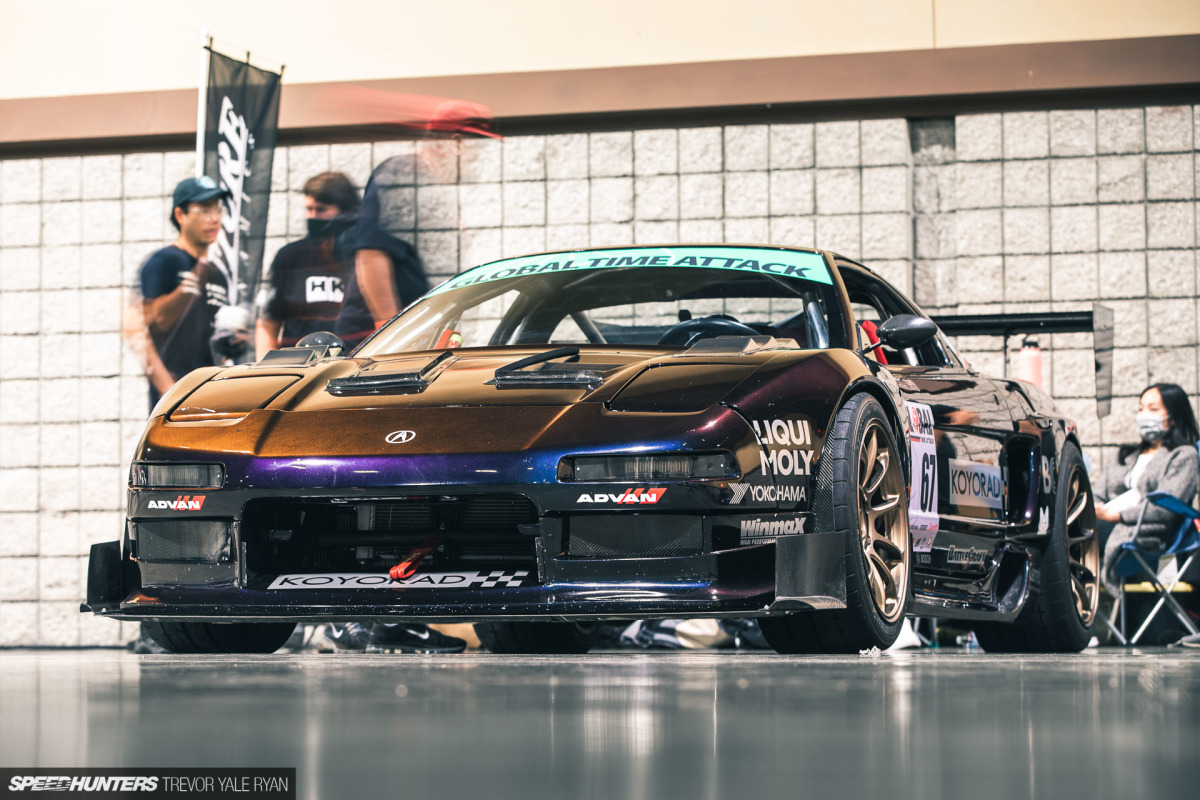
Speedhunters: Are there any limitations to the platform at high power levels?
Amir: “Once you start to push 800 to 900hp you’re asking a lot from four cylinders, so the overall stresses are naturally higher than in an LS making the same power, for example. But for the average person wanting to make anything up to 600hp it’s really a no brainer. For my specific application [the NSX], the mid-engine mounting creates extra wear on the transmission due to the concentration of all the weight, grip, vibrations over the driven axle. Transmission strength has been a challenge for us as a result, and we’ve lost a few during the development of the car.”
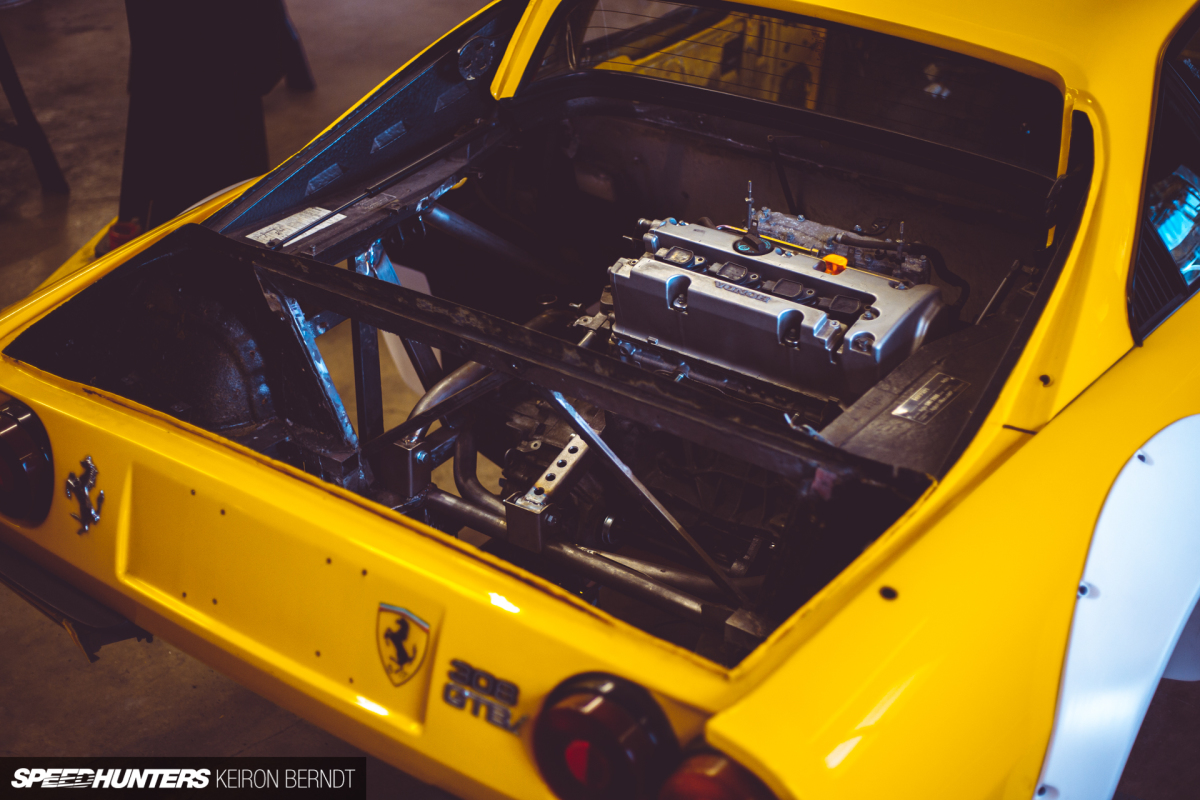
Speedhunters: Where do you see the future of the K-series going?
Amir: “The development has already come so far. I think we’ll see billet components (blocks, heads) proliferate, and as that happens absolute power levels will increase. The engine is basically the ‘Little LS’ already in North America, but you’ll start to see them in every platform. Like we’ve already seen them swapped into almost every Japanese chassis, but there’s 911s, Ferraris etc. getting these engines too. Smaller engineering shops will work out solutions to get a K-series in their specific model of interest. Apart from that, I think it will be incremental improvements from this point.”

The Honed boys and Amir are just two examples of builders making the most of the K-platform, and you’ve seen plenty more throughout the feature month. Although the K-series name lives on in the latest turbocharged and direct-injected Civic Type R, fundamentally the simple and dependable K we know and love is relegated to the Honda history books. It seems like tuners, however, will continue to keep the dream alive into the coming years.
Now, to figure out what I can put one into…
Blake Jones
Instagram: blaketjones
blake@speedhunters.com






K for the brilliant JDM Odyssey. North America got the excellent but bland LaGreat with the J35A engines
Neighbor put a K20 in a 1988 Nissan Maxima. The engine is unreal, tuneable and strong. I can’t destroy it in my FA5 no matter what i do!! Love the k20! Keep the K24…
I think the K20 series has to be the best version of the legendary NA VTEC engine because it has one of the most power and torque in any NA I4 engine
Definitely a K20 swap in a Honda OEM+ build would be the dream build
Mate, we know where this is going. Lol!
There's a guy in the UK shoving a Kseries in a BTCC inspired Mondeo. I don't particularly like the Mondeo, but I REALLY dig the idea of kswaping any car from the golden BTCC/DTM era

Also, any 70s/80s/90s NA RWD car, deserves a K, in my opinion
70s/80s/90s NA RWD *SMALL* car